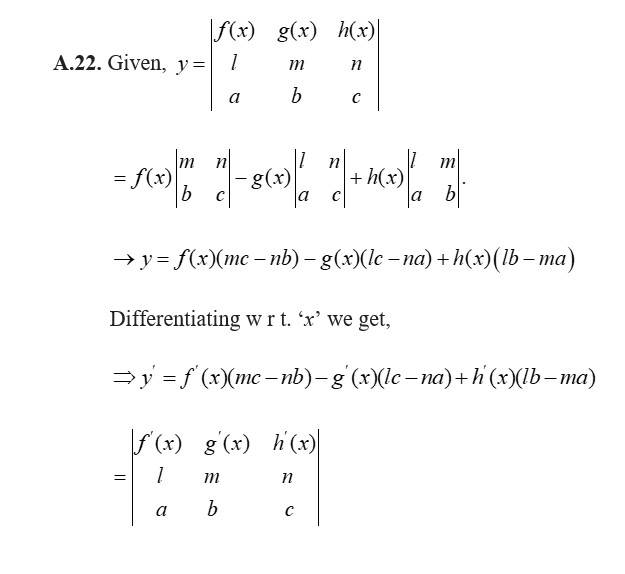Ncert Solutions Maths class 12th
Get insights from 2.5k questions on Ncert Solutions Maths class 12th, answered by students, alumni, and experts. You may also ask and answer any question you like about Ncert Solutions Maths class 12th
Follow Ask QuestionQuestions
Discussions
Active Users
Followers
New answer posted
4 months agoContributor-Level 10
The given D.E. is
Which is of form
So,
Thus the solution is of the form
Given,
C = -2
The particular solution is
New answer posted
4 months agoContributor-Level 10
The given D.E. is
Which is form
So,
Thus the solution is of the form.
New answer posted
4 months agoContributor-Level 10
The given D.E. is
Which is of form.
So,
Thus the general solution is of form,
New answer posted
4 months agoContributor-Level 10
The given D.E is
Which is of form
So,
Thus the general solution is of the form,

New answer posted
4 months agoContributor-Level 10
The given D.E is

Which is of form
So,
Thus the solution is of the form.
New answer posted
4 months agoContributor-Level 10
The given D.E. is
Which is of form
So ,
Thus the solution is of the form,
New answer posted
4 months agoContributor-Level 10
The given D.E. is
Which is of form
So,
Thus, the general solution is of the form
New answer posted
4 months agoContributor-Level 10
The given D.E. is
which is of form
So,
Thus, the general solution is of the form.
New answer posted
4 months agoContributor-Level 10
So, x = 1, x= 2 divides the real line into three disjoint intervals and
For
For
For
Hence, these polynomial fun are all continous and desirable. for all real values of x or, except x = 1 and x = 2.
ie,
For differentiavity at x = 1,
LHD =
= -2
RHD =
as L.HD ≠ R.HD
f is not differentiable at x =1.
For continuity at x = 1.
L.HL=
RHL = \ LHL = RHS
f is continuous at x = 1
For continuity & differentiability at x = 2
? LHL = RHL
f is continuous at x = 2
= 2
? LHD ≠ RHD
f is not differentiable at x = 2.
Taking an Exam? Selecting a College?
Get authentic answers from experts, students and alumni that you won't find anywhere else
Sign Up on ShikshaOn Shiksha, get access to
- 65k Colleges
- 1.2k Exams
- 687k Reviews
- 1800k Answers



